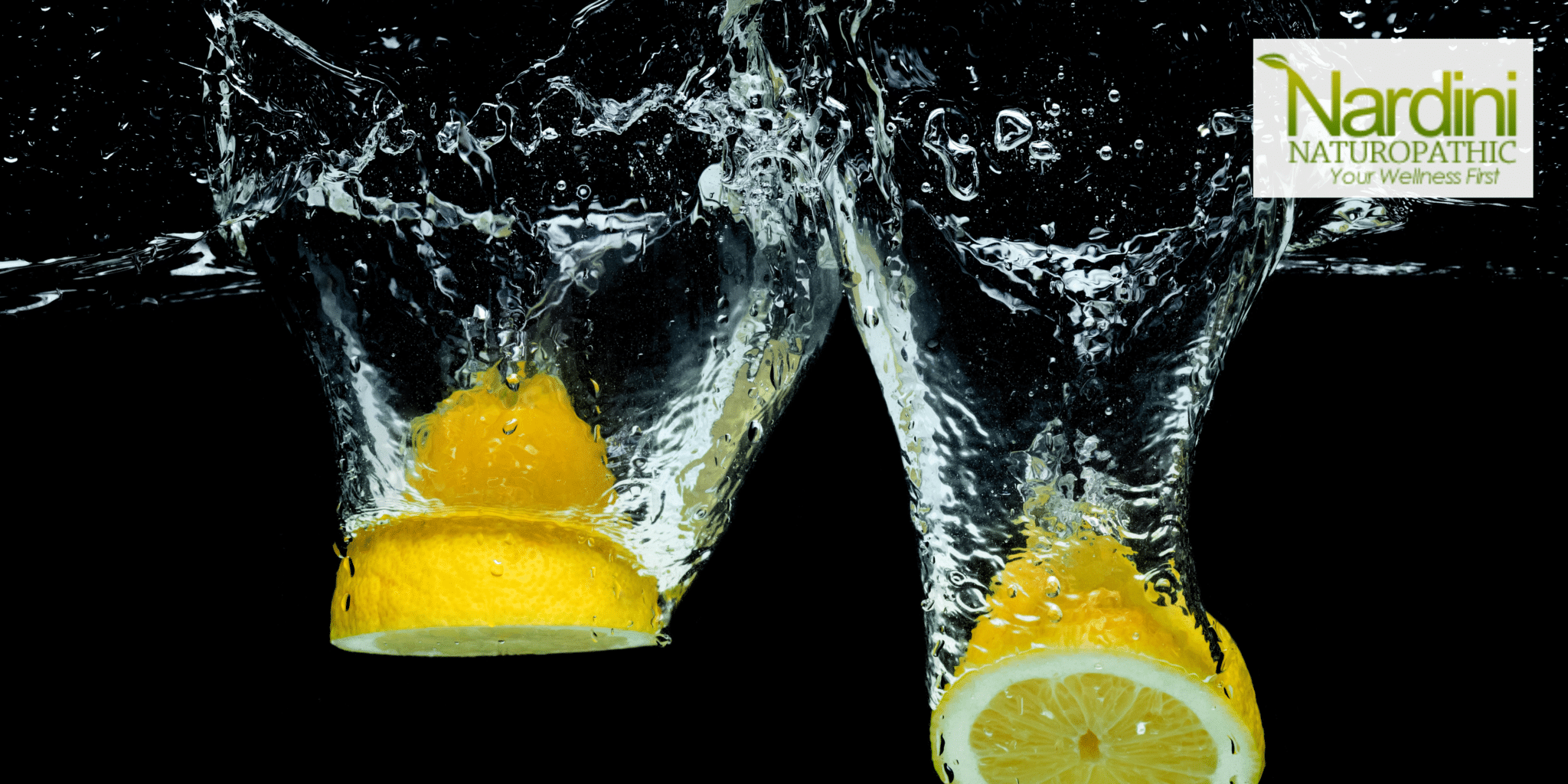It goes without saying that staying healthy doesn’t just happen. It takes a bit of time and effort to both recover and maintain your health.
Most of us are aware that a healthy diet and regular exercise are key factors that determine health. Sometimes we even get ourselves up to changing our diet and exercising more when another roadblock presents itself – money.
The cost of healthy food, a gym membership, and keeping the cupboard stocked with supplements may be a little too much for some. For others, the expense might be enough to give an excuse to just not bother.
What if I said that, in most cases, achieving and maintaining health does not have to break the bank?
Of course, if you’re managing a chronic health condition, it may require an initial investment to find the underlying causes and address them, with naturopathic medicine, for example.
In many cases, following some simple strategies that don’t require a small country’s tax revenue can go a long way to achieving one’s health goals.
Let’s look at a few tips for staying healthy while remaining within the budget.
Budget-Friendly Health Strategies
1. Eat Nutrient Dense Foods
It’s a sad fact that some of the unhealthiest foods are the cheapest – think white rice and white bread, for instance. Their upfront cost may be low, but they have a long-term, hidden cost – your health.
The price tag of healthier foods will be a bit higher, but the benefits they give you is invaluable. The key factor for buying healthy foods is to get ones that contain the most nutrition per dollar.
Plant foods tend to excel here.
Legumes, like lentils, chickpeas, black beans, and mung beans, are rich in protein, vitamins, minerals, and fibre. They are super-cheap: 100 grams of lentils costs about $3.50 CAD, for example.
Avocadoes provide a significant amount of healthy fat as well as potassium, magnesium, fibre, and antioxidants called carotenoids1. Ground up chia seeds are packed with fibre, potassium, iron, magnesium, and healthy fats. They, like avocado, are great in smoothies and can even be made into chia pudding as a dessert!
Fresh lemon juice can spruce up salads by providing Vitamin C and improving the digestion of minerals.
Although animal foods can be more expensive, they tend to pack a nutritional punch. So, it’s often worth it to carve out some budgetary space for them.
Sardines are a great source of protein and omega 3 fats, and their livers contain Vitamin D and iron. Look out for specials on beef and chicken liver as these provide similar nutrients. Eggs, especially the yolks, contain healthy fats, protein, Vitamin D, and Vitamin B12.
2. Go Organic Strategically
Buying organic food seems like a luxury if you have limited financial resources. If your food budget is less constrained, it might not seem worth the extra expense to purchase food that doesn’t look any different.
But it’s the inside that counts!
Research shows that organic foods have a higher nutritional content compared to their non-organic counterparts, especially for some nutrients, like Vitamin C, iron, magnesium, and phosphorus2. Organic foods also tend to have higher antioxidants in them and contain fewer chemical residues, like pesticides and nitrates.
There is no doubt that organic foods are more expensive. However, there are strategies to employ if you want to fit as many organic foods into the budget as you can.
Prioritize!
Most pesticides and many other food additives are fat-soluble. So, fat and oil-heavy foods tend to have more pesticide residues in them, depending on the food. Animal products, including meat and dairy, and plant products, like nuts, seeds, and oils, should be the top priority for your organic purchase as they tend to have the highest levels of contaminants.
Pest control is a bigger problem for some fruits and vegetables than others, so the spraying regimens will vary from one to another. Check out the Environmental Working Group’s “Dirty Dozen” list of the top twelve fruits and veggies with the highest burden of pesticide residues3. If you eat any of the foods on this list, make sure to buy it organic.
Unless you know the farmer and that they are not using chemicals to grow their products, stick to certified organic foods.
Perhaps the best piece of advice for eating organic on a budget is the obvious one -whenever and wherever possible, grow your own! Nothing beats a chemical-free vegetable grown in healthy, organic soil right at home. Your taste buds and your wallet will thank you!
3. Simple Detox
Even if you’re sticking to nutrient-dense, organic foods, you are still going to be exposed to toxins. Chemical toxins in the air, water, and food; electromagnetic frequencies from cellular phones and WiFi, and even stress are all toxic to the body.
Doing a proper detox program on a seasonal basis can often be very helpful. But it’s just as important to do simple weekly and even daily detoxes. And these don’t have to be expensive!
Water is the best detoxifier. However, the water itself is often contaminated. A countertop carbon filter will remove odours and chlorine from the water. For more thorough water filtration, consider reverse osmosis (RO) or distillation units. Under-the-counter RO systems are readily available and can be relatively inexpensive.
These two systems will remove most everything – toxic metals, chlorine, fluorine, and medication residues found in municipal water. They also take out beneficial minerals. If you use an RO or a distillation water filtration system, make sure to add the nutrients back with an added mineral cartridge or with mineral drops.
On the subject of water, squeezing a wedge or two of fresh, organic lemon juice into warm water and drinking that every morning is a good, simple liver detox (and great for Vitamin C and digestion as we saw above). Adding a bit of sea salt or Himalayan pink salt can help replenish electrolytes.
When the liver moves out toxins it secretes them into the bile, which it dumps into the digestive tract. Then, the toxins are removed from the body during the next bowel movement.
This is where fibre is important. The body relies on fibre in vegetable matter to bind up the toxins secreted by the liver so they can be eliminated. Otherwise, the toxic chemicals just get re-absorbed back into the body. Fibre is also great for balancing blood sugar, reducing excess cholesterol, and preventing constipation.
Good food sources of fibre include oats, avocado, raspberries, artichoke, almonds, and lentils. To get the recommended 25 to 38 grams of fibre per day, supplementing with chia seed and ground flax seed is an inexpensive way to help do that4.
4. Old-school Household Products
This is an area that often gets forgotten – the non-food products that we use on an every-day basis. Household cleaners and personal care products are not always a high priority, so they tend to get rammed into the budget at the end. Sadly, the less expensive products are often the most toxic.
Cosmetics and household cleaning products often contain toxic chemicals known as endocrine disruptors. Deodorant and toothpaste are sources of toxic aluminum. And this is not an exhaustive list of the synthetic toxins present in these products.
Fortunately, there are inexpensive alternatives to most of these items.
Good old-fashioned vinegar is a cheap and effective way to clean most surfaces in your house. If you need a little more oomph, mix white vinegar with a bit of baking soda to clean up tougher messes. Once you’re done the cleaning, mix a few drops of lemon juice or lemon essential oil with water in a spray bottle to give your kitchen or bathroom a fresh-scented spritz.
If you can’t splurge for less chemically laden laundry, dish detergents, and hand soaps, at least get ones that are perfume-free.
Baking soda works well as an alternative to toothpaste and a swish with some warm water and sea salt helps keep the mouth healthy. “Oil pulling” – swishing with sesame oil or coconut oil – is great for oral health and acts as a mild body detox.
A quick wash under the arms with soap and water mid-day often works better than deodorant. An apple cider vinegar wash once/week is an inexpensive way to keep the hair and scalp healthy.
Remember, people managed with simple solutions before modern industry stepped in and claimed to do it better, but certainly not cheaper.
5. Targeted Supplements
In an ideal world, we would get all our nutrition from a variety of fresh, organic foods.
In the real world, it’s a bit more complicated than that.
Sometimes organic foods are prohibitively expensive or just unavailable. Your neighbourhood grocery store might have organic apples and lemons, but you may have to travel further to find a larger variety of organic fruits and vegetables. Even a diet that is well short of 100% organic will be limited in the winter months.
This is where supplements can be helpful. The big issue with supplements is, if you’re not careful, the cost to maintain them can add up fast. So, making smart purchases is key.
Prioritizing your supplements will help you cut down on the unnecessary ones. The most important nutrients that can be difficult to get consistently through the diet include Vitamins B12, C, D, and K; omega-3 fats; and minerals, like iodine, magnesium, selenium, and zinc.
That sounds like a lot of supplements, but hold on! Getting these nutrients might be easier (and less expensive) than you think.
Good quality Vitamin C can be found in powders made from Amla and Camu Camu berry. Buying them in powder form and adding that to yogurt or smoothies keeps the cost down compared to capsules. There are C supplements that are cheaper, but they will be of much inferior quality to the natural form found in these fruits.
In the summer, 20 minutes per day in the sun with arms and legs exposed and no sunscreen is enough for many people to get their daily Vitamin D requirement for free5. People with darker skin tones will need more time in the sun to make enough Vitamin D for the day. Whatever the case, make sure not to get sunburned!
In the cooler months, anyone living in more northern climes will need to supplement with D. Fortunately, Vitamin D supplements are inexpensive, and you can get it with Vitamin K2 added, which helps the body get the best use of the Vitamin D.
Sardines, walnuts, and ground flax seed will help you get your omega-3 fat. However, a fish oil supplement is sometimes necessary. Cod liver oil can be a good option since it contains Vitamins A and D in addition to the omega-3s, covering three nutrients all-in-one.
For everything else, a good quality multi-vitamin can help fill in the blanks of the diet. It’s tempting to go real cheap here, but investing a little more in a higher quality multi is worth it and will save you having to buy dozens of cheap individual nutrient supplements.
What To Consider With Your Health Budget
I haven’t yet mentioned exercise because this one is not difficult to do on a budget.
Exercising at home by stretching, doing yoga, body-weight exercises, and lifting light weights, for example, can all be done inexpensively. Regular exercise also helps you save money by reducing the need for expensive treatments for health problems brought on by lack of movement.
Remember with supplements that less is more. A small number of high-quality vitamins and minerals is superior to many poor-quality ones.
And don’t take stuff that you don’t need. Consult with your practitioner to test for deficiencies so you know which nutrients to target with supplements.
Whether it’s supplements, cleaners, or personal care products, if you know you’ll be needing them for a long time, buy in bulk to save. If funds are especially tight, keep an eye out for specials, of course.
As always, check with your health practitioner before changing your diet or supplement regimen if you have a health condition, especially if you’re taking medication for it.
Employing a bit of strategy can help you maintain the health of yourself as well as your wallet all at the same time!
- https://www.hsph.harvard.edu/nutritionsource/avocados/
- https://altmedrev.com/wp-content/uploads/2019/02/v15-1-4.pdf
- https://www.ewg.org/foodnews/dirty-dozen.php
- https://www.canada.ca/en/health-canada/services/nutrients/fibre.html
- https://www.ncbi.nlm.nih.gov/pmc/articles/PMC3897598/
Book An Appointment With Nardini Naturopathic
Are you interested in finding out if you have a nutrient deficiency?
Or perhaps you’d like a review of your overall diet to see where you could be doing better.
Maybe you have food allergies or intolerances and worry you aren’t getting enough nutrients because of your restricted diet.
I’m Dr. Pat Nardini, a naturopathic doctor who offers nutritional counseling services to help ensure all of those gaps in your diet are filled, and that you’re getting enough of all the important nutrients which your body needs to function at its best.
Contact me today for more information, or book a free 15-minute consultation where I will help you understand how naturopathic medicine can help you.
If you have questions about naturopathic medicine, or you’d like to take your first step into the world of naturopathy, contact us at Nardini Naturopathic, and let’s book an appointment.
Yours in health,
Dr. Pat Nardini, Naturopathic Doctor
320 Danforth Ave suite 206,
Toronto, ON, M4K 1N8
-https://g.page/NardiniNaturopathicDanforth
Dr. Pat Nardini, ND is a licensed doctor of naturopathic medicine in Toronto, Ontario. He offers science based natural health solutions with a special focus on thyroid conditions.


